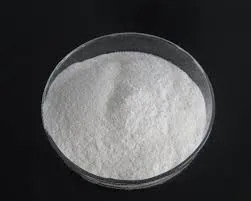
ഡിസം . 23, 2024 14:36 Back to list
Applications and Properties of Methyl Hydroxyethyl Cellulose in Various Industries
The Multifaceted Role of Methyl Hydroxyethyl Cellulose in Modern Applications
Methyl Hydroxyethyl Cellulose (MHEC) is a versatile cellulose derivative widely used in various industries due to its unique properties. As a nonionic, water-soluble polymer derived from natural cellulose, MHEC offers a range of functionalities that make it a valuable ingredient in many products, from construction materials to personal care products.
1. Chemical Composition and Properties
MHEC is synthesized through the etherification process of cellulose, wherein hydroxyl groups in the cellulose backbone are modified with methyl and hydroxyethyl groups. This modification enhances the chemical properties of cellulose, resulting in a polymer that exhibits excellent solubility in water, high viscosity, and binding capacity. The degree of substitution, which refers to the average number of hydroxyl groups replaced by methyl and hydroxyethyl groups, significantly influences MHEC's properties, including its solubility and viscosity. The ability to tailor these properties makes MHEC suitable for a variety of applications.
2. Applications in Construction
One of the primary industries utilizing MHEC is construction. In the formulation of cementitious materials, such as mortars and tile adhesives, MHEC acts as a thickener, improving workability and adhesion. Its water-retaining properties ensure that the mixtures remain workable for an extended period, allowing for better application and reduced wastage. Furthermore, MHEC helps to prevent sagging in vertical applications and enhances the durability of the cured material by reducing cracks and increasing bond strength.
3. Contribution to Personal Care Products
MHEC has carved a significant niche in the personal care and cosmetics industry. Due to its thickening and emulsifying properties, MHEC is commonly used in formulations for shampoos, conditioners, lotions, and creams. It improves the texture and stability of these products, delivering a pleasant end-user experience. Additionally, MHEC provides moisture retention, making it valuable in skincare products aimed at hydrating and protecting the skin. Its biocompatibility further solidifies its position as a preferred ingredient in formulations targeting sensitive skin types.
methylhydroxyethyl cellulose

4. Role in Pharmaceuticals
In the pharmaceutical industry, MHEC serves multiple purposes, primarily as an excipient in drug formulations. It acts as a binder and a film-forming agent, facilitating the creation of controlled-release dosage forms. MHEC's ability to provide a controlled release of active ingredients improves therapeutic efficacy while minimizing side effects. Moreover, it is employed as a suspending agent in liquid formulations, ensuring uniform distribution of active components.
5. Food Industry Applications
MHEC finds its way into the food industry as well, where it is used as a thickening agent, stabilizer, and emulsifier. Its ability to improve texture and viscosity makes it an excellent choice for sauces, dressings, and ice creams. As a food additive, MHEC contributes to mouthfeel and enhances the overall sensory experience of food products, making it an invaluable ingredient for food manufacturers.
6. Environmental Considerations
The increasing focus on sustainability and eco-friendliness has led to a growing interest in plant-derived materials like MHEC. Being a cellulose derivative, MHEC is biodegradable and can be sourced from renewable resources. This attribute aligns with the global movement toward greener alternatives in various industries, offering a more sustainable option compared to synthetic polymers.
Conclusion
Methyl Hydroxyethyl Cellulose stands out as a multifunctional ingredient with vital roles across a multitude of industries. Its unique combination of properties—such as solubility, thickening ability, and biocompatibility—makes it indispensable in construction, personal care, pharmaceuticals, and food applications. As industries continue to innovate and seek sustainable ingredients, MHEC is poised to remain a key player. Its versatility not only enhances product performance but also contributes to the ongoing transition toward environmentally friendly options, making it a staple in contemporary formulations. With ongoing research and development, we can expect to see even more applications and benefits from this remarkable cellulose derivative in the future.
-
Versatile Hpmc Uses in Different Industries
NewsJun.19,2025
-
Redispersible Powder's Role in Enhancing Durability of Construction Products
NewsJun.19,2025
-
Hydroxyethyl Cellulose Applications Driving Green Industrial Processes
NewsJun.19,2025
-
Exploring Different Redispersible Polymer Powder
NewsJun.19,2025
-
Choosing the Right Mortar Bonding Agent
NewsJun.19,2025
-
Applications and Significance of China Hpmc in Modern Industries
NewsJun.19,2025







